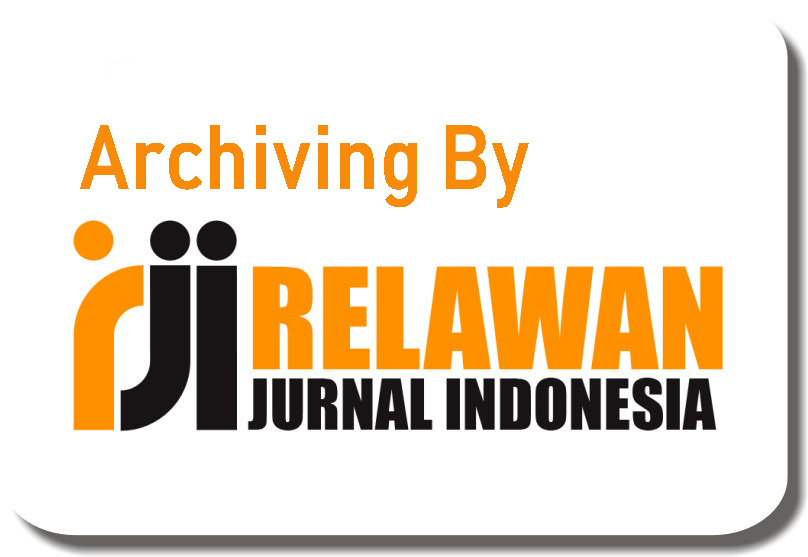Indonesian EFL Students’ Trust: English Teachers Educators’ VS Educational Influencers
Abstract
This study investigates the factors influencing Indonesian EFL Islamic University students' preference for educational influencers over their teacher educators. While social media has emerged as a significant source of information, there is a limited understanding of why students trust online influencers more than their formally qualified lecturers. The purpose of this study is to analyze and identify the specific reasons behind this comparative trust. Using qualitative interviews with five EFL students, data was collected via WhatsApp and analyzed through reduction, presentation, and verification. The findings reveal four main factors: (1) engaging and visually appealing video content, (2) relevance of topics to daily life, (3) entertaining and interactive teaching methods, and (4) perceived credibility enhanced by social media following. These results highlight the need for traditional educators to adapt teaching styles and integrate digital tools to better meet students' current learning preferences.
Keywords
Full Text:
PDFReferences
Abednego, F., Kuswoyo, C., Lu, C., & Wijaya, G. E. (2021). Analisis Pemilihan Social Media Influencer Pada Instagram Terhadap Perilaku Konsumen (Studi Kualitatif Pada Generasi Y Dan Generasi Z Di Bandung). JRB-Jurnal Riset Bisnis, 5(1), 57–73. https://doi.org/10.35814/jrb.v5i1.2558
Aka, K. A. (2017). Pemanfaatan Teknologi Informasi dan Komunikasi (TIK) sebagai Wujud Inovasi Sumber Belajar di Sekolah Dasar. ELSE (Elementary School Education Journal): Jurnal Pendidikan Dan Pembelajaran Sekolah Dasar, 1(2a), 28–37. https://doi.org/https://www.doi.org/10.30651/else.v1i2a.1041
Ali, B., & Baig, F. (2022). The Impact of Educational Videos on the Academic Performance of University Students in Distance Learning. Journal of Positive School Psychology, 6(12), 1233–1249. https://journalppw.com/index.php/jpsp/article/view/14933
Alvianto, W. A., Amanullah, J., & Santoso, L. (2024). Tiktok Sebagai Media Interaktif Pembelajaran Editing Video. Abstrak : Jurnal Kajian Ilmu Seni, Media Dan Desain, 1(1), 60–73. https://doi.org/https://doi.org/10.62383/abstrak.v1i1.32
Anggraini, A. A., & Saputra, E. R. (2023). Implementasi Pengembangan Infografis Terintegrasi sebagai Media dan Suplemen Pembelajaran Bahasa Inggris di SD. Jurnal Didaktika Pendidikan Dasar, 7(2), 617–638. https://doi.org/10.26811/didaktika.v7i2.920
Bahri, A., Damayanti, C. M., Sirait, Y. H., & Alfarisy, F. (2022). Aplikasi Tiktok Sebagai Media Pembelajaran Bahasa Inggris Di Indonesia. Jurnal Indonesia Sosial Sains, 3(1), 1120–1130. https://doi.org/https://doi.org/10.59141/jiss.v3i01.525
Bujuri, D. A., Sari, M., Handayani, T., & Saputra, A. D. (2023). Penggunaan Media Sosial dalam Pembelajaran: Analisis Dampak Penggunaan Media Tiktok Terhadap Motivasi Belajar Siswa di Sekolah Dasar. Jurnal Ilmiah Pendidikan Dasar, 10(2), 112–127. https://doi.org/10.30659/pendas.10.2.112-127
Gibson, K. (2020). Bridging the digital divide: Reflections on using WhatsApp instant messenger interviews in youth research. Qualitative Research in Psychology, 19(3), 611–631. https://doi.org/10.1080/14780887.2020.1751902
Hovland, C. I., & Weiss, W. (1951). The Influence of Source Credibility on Communication Effectiveness. Public Opinion Quarterly, 15(4), 635–650. https://doi.org/10.1086/266350
Kaur, M., & Sulaiman, N. (2023). English Teachers’ Self-Perceptions and the Effectiveness of Using TikTok to Enhance Speaking Skills in Young ESL Learners: A Systematic Review Paper. International Journal of Academic Research in Progressive Education and Development, 12(3), 905–921. https://doi.org/10.6007/ijarped/v12-i3/18935
Khalaf, N. Z., & Hussein, N. O. (2023). The effect of Content Creator for English Phenomenon in social media on Vocabulary Learning. AJELP: The Asian Journal of English Language & Pedagogy, 11(2), 100–123. https://doi.org/https://doi.org/10.37134/ajelp.vol11.2.9.2023
Knott, E., Rao, A. H., Summers, K., & Teeger, C. (2022). Interviews in the social sciences. Nature Reviews Methods Primers, 2(73), 1–15. https://doi.org/10.1038/s43586-022-00150-6
La’biran, R., Ruung, T. T., & Sallata, Y. N. (2024). Exploring the Influence of Instagram Usage on English Education Students’ Vocabulary Acquisition at UKI Toraja. International Journal of Social Science and Human Research, 07(01), 480–483. https://doi.org/10.47191/ijsshr/v7-i01-62
Miles, M. B., & Huberman, A. M. (1994). Qualitative Data Analysis: an expanded sourcebook. In SAGE Publications (2nd ed).
Nasution, A. K. P. (2023). Instagram in English Language Learning: A Systematic Literature Review. Journal of Linguistics, Literature and Language Teaching (JLLLT), 3(1), 33–52. https://doi.org/https://doi.org/10.37249/jlllt.v3i1.708
Perloff, R. M. (2017). The Dynamics of Persuasion Communication and Attitudes in the 21st century. In Routledge (6th ed.). https://doi.org/10.1177/1464884920938936
Pujiono, A., Kanafi, K., & Farida, M. (2022). Media Sosial sebagai Sumber Belajar bagi Generasi Z. Regula Fidei : Jurnal Pendidikan Agama Kristen, 7(2), 252–262. https://doi.org/10.33541/rfidei.v7i2.80
Rizqiyah, N. (2024). Media sosial untuk meningkatkan kualitas Bahasa Inggris. Maliki Interdisciplinary Journal, 2(11), 303–311. https://urj.uin-malang.ac.id/index.php/mij/article/view/9745
Serlyana, R., & Zuhdi, U. (2024). Pengaruh Media Video Terhadap Peningkatan Kosakata Bahasa Inggris Materi Taste Of Food Siswa Kelas V Sekolah Dasar. Jurnal Pendidikan Guru Sekolah Dasar, 12(7), 1301–1310. https://ejournal.unesa.ac.id/index.php/jurnal-penelitian-pgsd/article/view/61323
Syachsalsabillah, S., & Hamid, A. I. R. (2024). English Education Student’s Perception And Motivation in Learning Descriptive Writing Skills Through Instagram. Journal of English Language Learning (JELL), 8(1), 506–517. https://doi.org/10.31949/jell.v8i1.9758
Syahira, S., Wahab, I., & Tahang, H. (2024). Eksplorasi Pengaruh Media Sosial Terhadap Peningkatan Keterampilan Berbicara Bahasa Inggris di Kalangan Mahasiswa S1: Studi Kualitatif. Jurnal Perspektif Pendidikan, 18(2), 214–222. https://doi.org/10.31540/jpp.v18i2.3309
Warini, N. L., Dewi, N. P. E. S., Susanto, P. C., & Dewi, P. C. (2020). Daya Tarik Tiktok Sebagai Media Pembelajaran Bahasa Inggris Online. Seminar Ilmiah Nasional Teknologi, Sains, Dan Sosial Humaniora (SINTESA), 27–34. https://doi.org/10.36002/snts.v0i0.1230
Wibowo, T., & Ellysinta, V. (2022). Studi Penerapan Media Sosial Sebagai Media Pembelajaran Yang Potensial dan Efektif: Studi Kasus Instagram @theenglishnut. Jurnal Teknologi Informasi, 8(1), 82–90. https://doi.org/https://doi.org/10.52643/jti.v8i1.1775
Yanthi, R. (2024). Gambaran Pemanfaatan Media Sosial sebagai Sumber Belajar oleh Siswa Sekolah Menengah Pertama. Jurnal Inovasi Guru Indonesia, 1(2), 45–50. https://doi.org/https://doi.org/10.63202/jigi.v1i2.34
DOI: https://doi.org/10.31004/jele.v10i3.797
Refbacks
- There are currently no refbacks.
Copyright (c) 2025 Revanda Putri Salsabila, Nuskhan Abid

This work is licensed under a Creative Commons Attribution-ShareAlike 4.0 International License.



